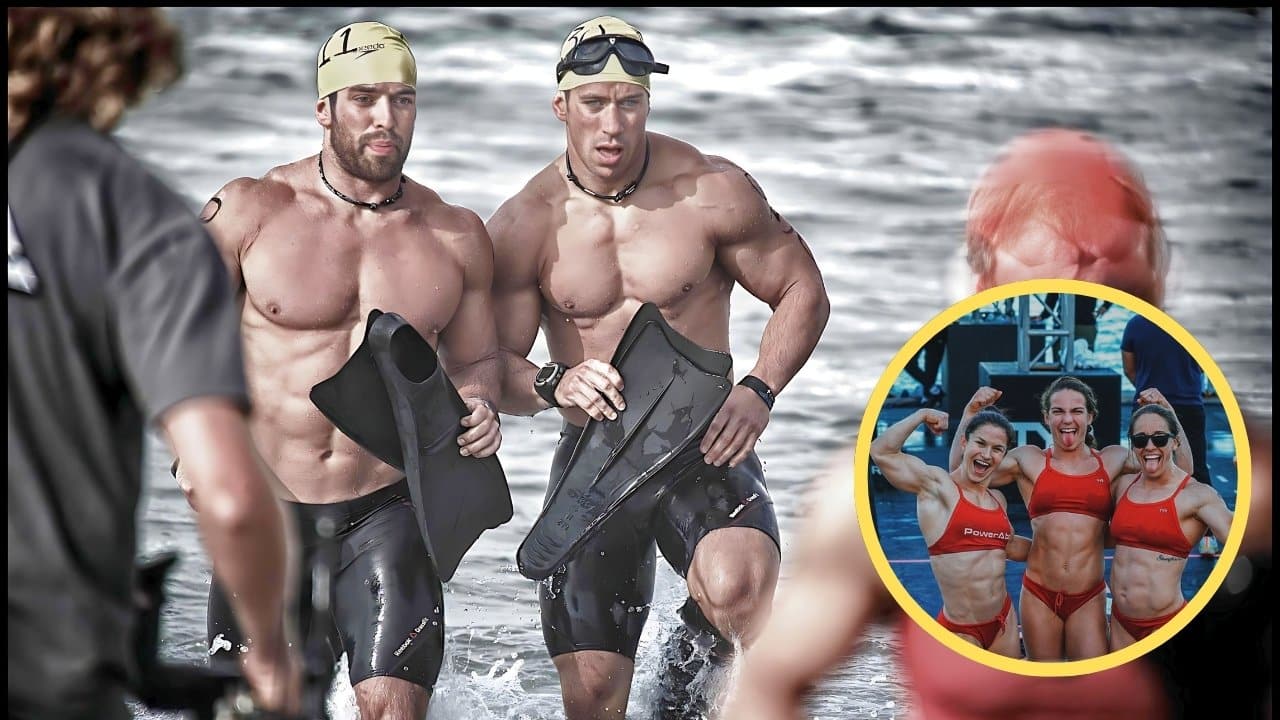Discover how swimming can transform your body.
Ed Orman, a physiotherapist, underscores swimming’s dual benefits: not only does it serve as an excellent cardio workout, it also plays a significant role in muscle development.
Learn how water’s unique resistance can help you achieve your fitness goals. Are you ready to build a leaner, more powerful physique?
This article reveals the science and practical tips you need to unlock swimming’s muscle-building potential.
Jump to:
The Science of Muscle Building in Swimming
To build muscle, three conditions are essential: muscle tension, metabolic stress, and muscle damage. Swimming uniquely meets all these conditions through its inherent resistance, which is provided by water.
By swimming with proper intensity and regularity, you can create the necessary stress and tension on your muscles, leading to increased strength and muscle mass.
Swimming vs. Traditional Strength Training
Swimming provides a unique environment for building muscle. Unlike traditional weightlifting or bodyweight exercises that rely on gravity, swimming utilizes the natural resistance of water for a full-body workout.
This water resistance creates a low-impact environment, leading to less stress on joints, making it an ideal option for individuals with injuries or limited mobility.
Moreover, water resistance works the muscles in both concentric and eccentric phases of contraction, enhancing overall muscle development and reducing the risk of overuse injuries.
Muscle Groups Targeted by Swimming
Upper Body Muscles
Swimming engages multiple upper body muscles. The shoulders, chest, and back receive significant workout through the repetitive motions of pushing and pulling against water resistance.
Strokes such as the breaststroke and butterfly particularly target the pectoralis major, latissimus dorsi, and trapezius muscles. Meanwhile, the biceps, triceps, and shoulder muscles are intensively used during the front crawl and backstroke.
Core Muscles
The core is crucial for stabilizing the body in water. Swimming activates the abdominal muscles, obliques, and lower back, enhancing core strength and stability.
These muscles are not only vital for maintaining balance but also assist in propulsion during movements like the dolphin kicks and turns.
Lower Body Muscles
Although swimming is predominantly an upper body exerciser, the lower body also benefits greatly. The legs, for example, account for 33% of the speed in sprinting freestyle.
Kicking movements engage the quadriceps, hamstrings, glutes, and calves, thus strengthening and toning the lower body.
Additional Benefits: Cardiovascular and Mental Health
Swimming boosts cardiovascular health by increasing heart rate and building endurance. This enhancement of the cardiovascular system contributes to overall health and longevity.
Furthermore, the calming nature of being in water can significantly reduce stress and improve mental health, making swimming a holistic exercise option.
Workout Plans for Muscle Growth
To maximize muscle building through swimming, incorporate targeted workouts with a focus on intensity and progression. Here’s a sample workout plan:
Warm-up: 5 minutes of easy freestyle or backstroke.
Main Set:
- 4 x 50 meters freestyle sprints at maximum effort with 1-minute rest between sprints.
- 4 x 100 meters breaststroke at a moderate pace with 30 seconds rest between repetitions.
- Cooldown: 5 minutes of easy swimming, any stroke.
Important: Adjust distances and rest periods based on your fitness levels. As your endurance improves, you can gradually increase the distances and reduce the rest periods to intensify the workouts.
Practical Tips for Building Muscle Through Swimming
To effectively build muscle through swimming, consistency is key. Aim for at least two to three sessions per week, each lasting between 30 to 60 minutes. Beginners should focus on mastering technique and gradually increasing workout intensity to avoid injuries and overexertion.
A diet rich in protein is essential for muscle repair and growth. In addition to regular swimming, incorporating interval training and resistance exercises can further enhance muscle development. Tools like swim parachutes and resistance bands add extra resistance, pushing your muscles to work harder. For advanced swimmers, reducing rest periods and adding hypoxic sessions can intensify the workouts and maximize muscle growth.
Conclusion
Swimming is more than just a cardiovascular workout; it is an effective muscle-building activity that engages the whole body. With consistent practice, proper nutrition, and strategic exercise variations, swimming can significantly improve muscle tone, strength, and overall physical fitness. Dive into the world of swimming and let it propel you toward a stronger, healthier physique.














